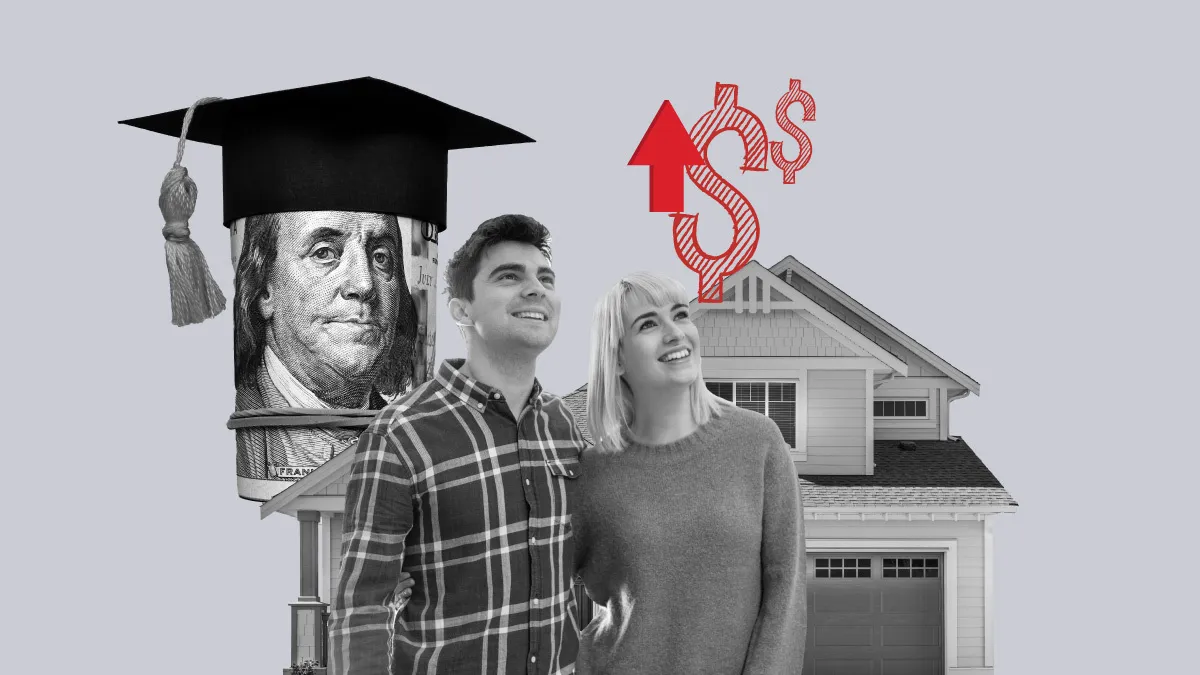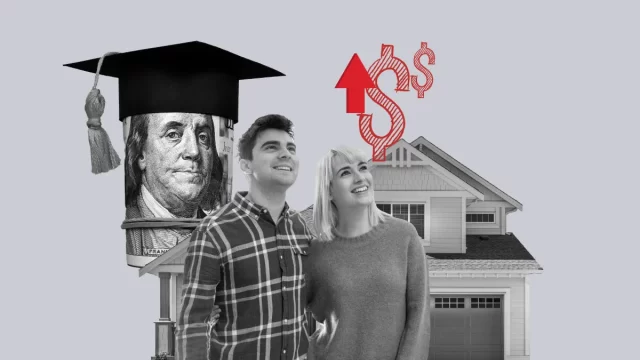
An analysis released Thursday by MortgageResearch.com suggests that the average new college graduate likely won’t be able to afford a home until April 2034 — nearly 10 years after graduation — due to a triple burden of surging home prices, student loan debt and modest entry-level salaries.
The study, which uses average federal student loan amounts by state from EducationData.org, assumes a 6.53% interest rate for undergraduate loans over a 10-year term. It estimates how long it would take graduates in each state to save for a 10% down payment, factoring in average starting salaries, home prices and student loan payments.
Although MortgageResearch.com reported that the national average points to a nine-year savings journey, the timeline varies drastically depending on geography.
In West Virginia, for example, 2025 college graduates could expect to purchase a home by April 2030 — in about five years. But in Hawaii, where the average 10% down payment tops $98,000, it could take nearly 18 years, delaying homeownership until February 2043.
“These numbers highlight how geography influences the path to homeownership for first-time buyers,” said Tim Lucas, lead analyst at MortgageResearch.com. “Where you land your first job and choose to live can be just as important as your degree. But it’s not just about home prices.
“Even in more affordable markets, it’s the weight of student loan debt that often dictates how long new grads will wait before they can buy a home.”
Mortgage credit availability also plays a role. In April, mortgage credit availability remained unchanged at 102.9, according to the Mortgage Bankers Association (MBA)’s Mortgage Credit Availability Index (MCAI). The MBA said that while credit conditions have loosened since 2023, they’re still relatively tight.
A decline in the MCAI indicates that lending standards are tightening, while increases indicate more lax credit requirements. The index was benchmarked to 100 in March 2012.
The MBA’s sub-indexes for conventional and government loans remained unchanged from March to April. Of the component indices of the conventional MCAI, jumbo loans were down 0.1% and conforming loans were up 0.2% during the moth.
“Credit availability was unchanged in April following a sizable increase in March,” Joel Kan, MBA’s vice president and deputy chief economist, said in a statement.
“Overall levels of credit supply remain tight but have generally grown since 2023, as lenders continue to offer cash-out refinance loan programs as well as jumbo and non-QM loans. Lenders remain positioned for potential refinance opportunities as mortgage rates continue to fluctuate.”
Homebuyer realities vary by location
The study assumes that graduates save 13.8% of their gross income — triple the national average, according to the U.S. Bureau of Economic Analysis — toward student loans and a future down payment.
With an estimated annual salary of $64,598, this year’s graduates who don’t have student loans could save $743 per month. But based on a typical loan payment of $410, they would only have $333 left to put towards a down payment.
As a result, the analysis suggests that student loan debt delays homeownership by an average of four years and eight months. Without student debt, a graduate could buy a home by August 2029. With debt, the target shifts to April 2034.
Even in markets with lower home prices, student loan debt can significantly delay homeownership. In Mississippi and West Virginia, affordable housing is offset by modest starting salaries and limited savings, leaving grads years away from affording a down payment.
In Mississippi, where the average starting salary is $52,266 and the average home price is $180,641, grads can only save $177 a month, pushing homeownership to late 2033.
Meanwhile, in high-salary areas like Washington, D.C., where the average starting salary is the highest in the nation ($79,235), steep home prices (which average $723,888) and large student loan balances delay purchases until as late as 2038.
First Time Home Buyer FAQs - Via HousingWire.com




